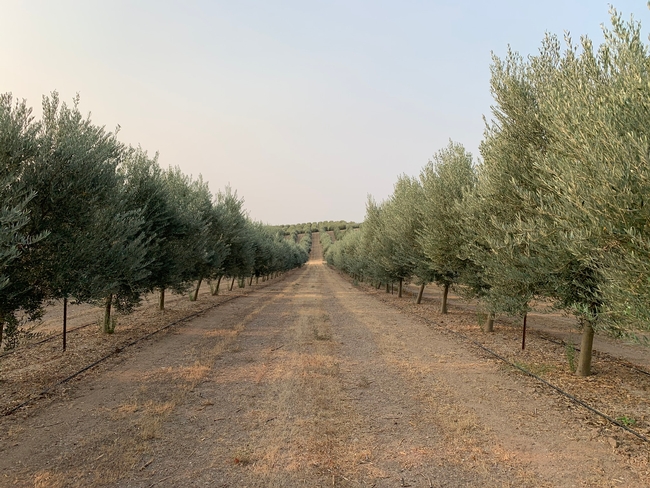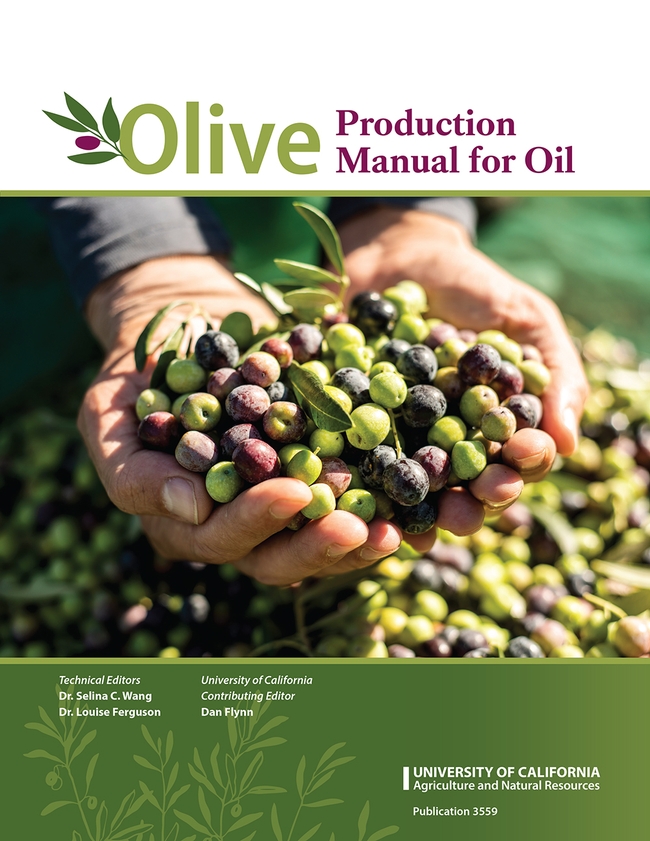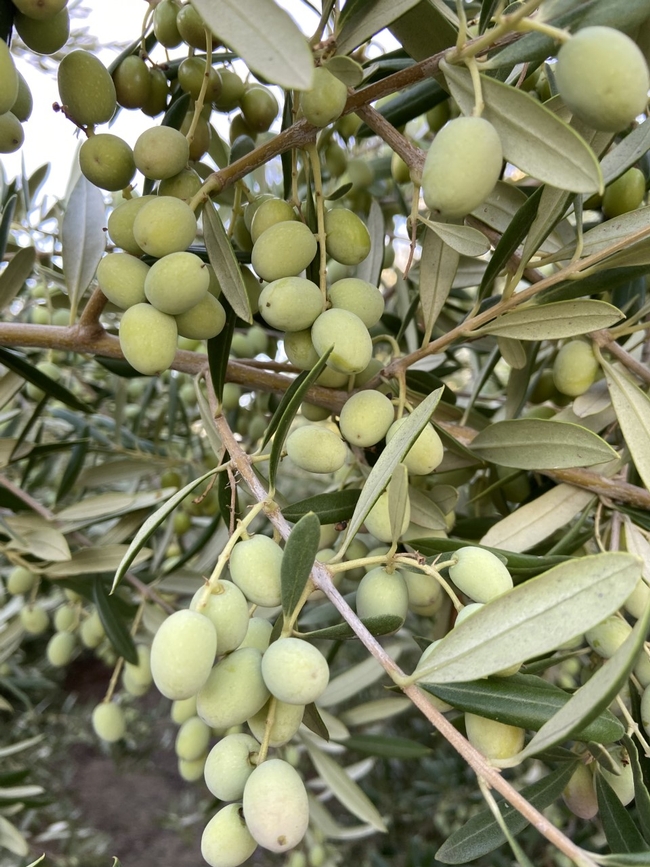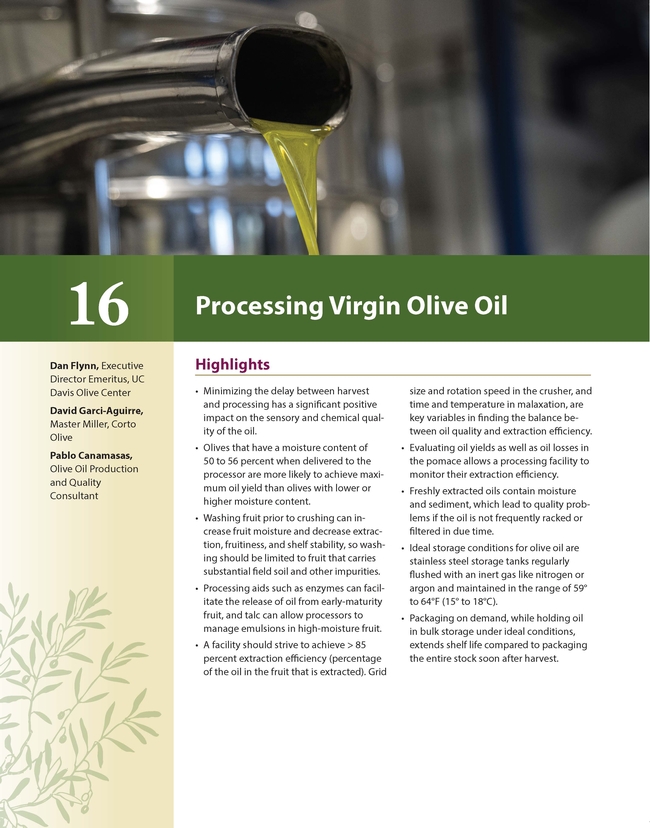Posts Tagged: UC ANR
Foundation created to energize community support for UC ANR mission
Board of Directors to promote philanthropy through advocacy and fundraising in support of agriculture, natural resources and community health
The new University of California Agriculture and Natural Resources Foundation has been established to advance UC ANR's essential research and extension mission.
The foundation – to be incorporated as a 501(c)(3) organization following approval by UC President Michael Drake in October – will support programs that promote California's agriculture and food systems; natural ecosystems and working landscapes; and healthy and thriving communities.
“The establishment of this foundation could not have come at a better time, as it will inspire the vital resources and energy we need to meet the pressing challenges we pinpointed in our recently released Strategic Vision 2040,” said Glenda Humiston, UC vice president for agriculture and natural resources.
Modeled after similar entities at UC campuses, the UC ANR Foundation will be guided by a volunteer Board of Directors. Representing a variety of regions and communities across California, the directors collectively bring years of experience in the agriculture, natural resources, government, academic and nonprofit sectors.
“By tapping into the board's connections, relationships and knowledge of our work and its impact, UC ANR is well-positioned to undertake significant and truly transformative fundraising initiatives and campaigns,” said Greg Gibbs, executive director of UC ANR Development Services.
The Board currently comprises eight community leaders and three ex officio members:
Don Bransford
Owner and Operator
Bransford Farms
Tom Delfino
Sr. Principal
S.S. Papadopulos & Associates
Bill Frost
UC Cooperative Extension Advisor Emeritus and former Associate Vice President
UC ANR
Anne Haddix
Co-President, Board of Directors
UC Master Gardeners of Sonoma County (Volunteer)
Corinne Martinez, Board Chair
President and Chief Operations Officer
Berryessa Gap Vineyards
Soapy Mulholland
Principal
Sopac & Associates LLC
Sharon Nance
President
NTAPROBLM LLC Inc.
Stephen Reid
Head Gardener of the Rose Garden
The Huntington Library and Botanic Gardens
Ex Officio Members
Greg Gibbs, Board Secretary
Executive Director, Development Services
UC ANR
Glenda Humiston
Vice President
UC ANR
Tu Tran, Board Treasurer
Associate Vice President
UC ANR
“We are grateful to the members of the new board for their leadership, expertise and passion for our mission, and we're thankful to the many donors – past, present and future – who generously support our work to improve lives all across California,” Humiston said.
History of philanthropic support empowered creation of foundation
It has been that outpouring of support – channeled by Gibbs' fundraising team – that enabled the establishment of the UC ANR Foundation. Gibbs was part of a nascent development team created just seven years ago, in 2017, to increase private funding from individuals, foundations, companies and agricultural commodities groups.
Within that time, the Development Services team has raised crucial funds for a wide range of impactful programs and projects. For example, philanthropic support is fueling efforts to cultivate workforce development in agriculture and related fields in Orange County, drive innovations in the “circular bioeconomy” within the San Joaquin Valley, strengthen wildfire resiliency in communities across the foothills of the Sierra Nevada, and propel leading-edge research to benefit growers of citrus, grapes and other valuable commodities.
“People are seeing the true impact of UC ANR, and I think this foundation board is a testament to that,” Gibbs said. “It's a validation of all the work that's been done over the last seven years.”
In 2023, a Vice President's Cabinet began laying the groundwork for the foundation by establishing its bylaws and structure. That group comprised several current board members, as well as Andrea Ambrose, UC ANR director of advancement; Adina Merenlender, professor of Cooperative Extension in conservation science; and Kerry Tucker, chief strategic counsel at Nuffer, Smith, Tucker.
Then, presented with UC ANR's track record of robust fundraising and measurable impacts, UC President Drake approved the incorporation of the new nonprofit foundation on Oct. 2. The foundation will begin work with UC ANR leadership and staff in early 2025 to develop short- and long-term fundraising plans.
For the public, there is an immediate opportunity to support UC ANR's work – Giving Tuesday. From midnight to midnight on Tuesday, Dec. 3, visit give.ucanr.edu to donate and participate in a global online giving event.
“Just as UC ANR programs significantly improve lives in California and across the nation and world, our donors substantively improve those programs,” Gibbs said. “They believe in what we do, and they make our research and extension activities better in every sense – more impactful, more accessible and more sustainable.”
For more information on the UC ANR Foundation and opportunities to contribute, contact Greg Gibbs at glgibbs@ucanr.edu.
Extreme weather accelerates nitrate pollution in groundwater
Extreme weather spurred by climate change, including droughts and heavy rains, may increase the risk of nitrates from fertilizers ending up in groundwater, according to a recent study from researchers at the University of California, Davis. The study found heavy rains after a drought caused nitrates to seep 33 feet under farm fields in as little as 10 days. The study was published in Water Resources Research.
“The conventional wisdom was that it could take several weeks to years for nitrates to move from the crop root zones to reach groundwater,” said corresponding author Isaya Kisekka, a professor in the Departments of Land, Air and Water Resources and Biological and Agricultural Engineering. “We found these extreme events, such as California's atmospheric rivers, are going to move nitrate more quickly.”
In this study, different methods were used to measure how much nitrate, a component of nitrogen fertilizer, was seeping down through the soil in a tomato and cucumber crop near Esparto, California. Scientists conducted their research from 2021 until 2023 when California was experiencing periods of drought followed by atmospheric rivers. They measured nitrate during both the growing seasons and the rainy seasons.
Drought can leave more nitrogen in soil
Previous studies have shown about 40% of nitrogen fertilizer used for vegetables isn't absorbed by the plants but remains in the soil. During droughts, crops don't use nitrogen efficiently, leading to excess nitrogen in the soil. This study found that if a drought is then followed by heavy rainfall, that sudden burst of water causes nitrate to seep in groundwater more quickly. The nitrate concentration in the shallow groundwater exceeded the U.S. Environmental Protection Agency maximum contaminant level of 10 milligrams per liter for drinking water.
“In California, we often say we swing between droughts and floods,” said Kisekka. “These extreme events that come with climate change are going to make the risk of these chemicals ending up in our drinking water much more severe.”
Groundwater is the primary source of drinking water for most of California's Central Valley. In some regions, such as the Tulare Lake Basin, nearly one-third of drinking and irrigation wells exceed the EPA's safe nitrate level. High nitrate levels in drinking water can increase health risks, especially for young children. It may also increase the risk of colorectal cancer.
Need for real-time soil nitrate monitoring
Central Valley farmers are required to report to the Regional Water Board how much nitrogen they applied to their field and how much was removed as part of the crop's yield. The study compared different ways of monitoring when nitrate from fertilizers seep into groundwater. Kisekka said the results highlight the need for affordable, real-time soil nitrate monitoring tools to help farmers manage fertilizer use efficiently.
By using conservation practices that limit leftover nitrates in the crop's root zone after harvest, farmers can help reduce nitrate contamination in groundwater.
This study's data will also help improve a model called SWAT, which is used to track nitrate seepage into groundwater across California's Central Valley. This effort is part of the Central Valley Water Board's program to regulate irrigated farmlands.
Other UC Davis authors include Iael Raij Hoffman, Thomas Harter and Helen Dahlke.
The study was supported by the USDA Natural Resource Conservation Service through its Conservation Effects Assessment Project. The national project is designed to assess the effectiveness of conservation practices across different watersheds. The study also had support from the USDA National Institute of Food and Agriculture.
UC ANR publishes first-ever manual on olive production for oil
Growers, UC Cooperative Extension researchers offer guidance on producing high-quality olives
Facing a deluge of lower-price products from Europe, the California olive oil industry is doubling down on its clear-cut competitive edge: the consistent and bona fide quality of its oil.
“Olive Production Manual for Oil,” a new book published by University of California Agriculture and Natural Resources, aims to help California olive growers maximize that advantage.
“It's a tough market to compete in, but I think the way to win for California is to compete on quality,” said book co-editor Selina Wang, a UC Cooperative Extension specialist in the UC Davis Department of Food Science and Technology. “The quality of California olive oil is unmatched, but you can't make good quality olive oil with bad fruit, so the goal is to get more fruit from the trees – and for the fruits to be high-quality fruit.”
The 273-page manual, available for purchase online, is the first of its kind in the U.S. While some parts of the book are specific to California (which grows nearly all of the olives for domestically produced olive oil), most of the material would be useful to producers in other states, Wang noted.
“Through our conversations with growers, it became clear to us that a manual like this – not a scientific publication but a manual that is easy to follow, written in language that is accessible, and with pictures and illustrations – would be really helpful to the growers,” she said.
Growth of California olive oil industry necessitated creation of manual
Aside from a book focused predominantly on table olives and another on organic olive production (by UCCE farm advisor emeritus Paul Vossen), there was no one-stop, comprehensive resource on the bookshelf for oil olive growers. The need for such a manual had become more acute as oil olives replaced table olives in California orchards during the last 20 years.
Whereas harvesting by hand was historically cost-prohibitive, the introduction of super-high-density planting systems in 1999 made oil olive production more economically feasible. Mechanical pruning and harvesting of new cultivars (Arbequina, Arbosana and Koroneiki) – specifically bred for these densely planted orchards – led to the rapid expansion of oil olives in the state. According to a U.S. Department of Agriculture report, California olive oil production jumped from 2 million pounds in 2006 to an average of 21 million pounds in 2021–23.
With about 37,000 acres of oil olives planted across California, the Olive Oil Commission of California saw the need to support the production of this manual. Championed by Dan Flynn, founder and executive director emeritus of the UC Davis Olive Center, Wang and co-editor Louise Ferguson outlined the contents of the book. They then sought out a mix of growers and industry professionals and UCCE advisors and specialists to write its chapters.
“Most of the information is data-based, from people who are working with the olives,” said Ferguson, a UC Cooperative Extension pomologist at UC Davis. “This is the first data-based olive oil production manual we've had.”
Manual infused with firsthand insights, practical recommendations
Hard-earned experience taught growers a valuable lesson that is conveyed in the book – the need to hand-prune. While mechanical pruning helps control the size of the trees, some hand-pruning is still required to allow light to filter to the leaves. Failing to do so leads to a dramatic decrease in yield.
“That happened in many of the orchards that were inexperienced in these new cultivars and new super-high-density planting systems,” Ferguson said.
She added that other key topics in the manual include irrigation management in a water-constrained state, nitrogen management, harvest timing and orchard site selection. Choosing a good spot for planting is crucial in this era of extreme climate volatility, Ferguson noted, as olive trees are significantly affected by temperature shocks in spring (fruit set) and fall (harvest).
For Wang, another overarching theme in the manual is the importance of testing. Testing the soil, water and leaves provides critical data that growers can use to adjust their inputs and production practices for optimal profitability.
“You may spend a couple hundred dollars on the lab work, but it will pay off, for sure – you're going to increase the health and productivity of your trees,” Wang explained. “Oil olive growers are paid based on the oil content in their fruit; you not only want to have a lot of fruit on the trees, you want to make sure that your fruit are accumulating oil.”
California oil olive growers, practices continue to evolve
Wang and Ferguson hope their book will help California producers compete more effectively in the global marketplace. Currently, about 90% of the olive oil consumed in the U.S. is imported from Mediterranean countries, due primarily to the lower price point. In that region, producers tend to harvest riper olives that produce oil at a greater volume but lesser quality.
In contrast, California growers harvest earlier and produce oil that is higher quality (with more flavor and more antioxidants) and far exceeds accepted standards for “extra virgin olive oil.”
According to Wang, California olive oil mills have nearly maximized their efficiency, and the growth opportunity for the industry is in the orchards: to optimize practices to produce more fruit, and to plant more trees. Wang said the new manual can help on both fronts.
“Just like for other crops, focusing on quality – while increasing efficiency and productivity, and therefore profitability – is the name of the game,” she said.
Ferguson also stressed that knowledge continues to evolve and urged growers to reach out to the editors and chapter authors with their experiences.
“Most of the authors are in California and they're working,” she said. “So if you start to notice things that are different, or you want more information or something is not clear, the authors are available.”
The manual can be purchased at https://anrcatalog.ucanr.edu/Details.aspx?itemNo=3559.
UC ANR's commitment to helping youth thrive
Dear Colleagues,
As you've undoubtedly seen in news reports for the past several months, our society continues to become more polarized. One aspect of that has been a back-pedaling by many corporations from expanded goals related to diversity, equity and inclusion (DEI). One of those companies is a long-time partner that is a major supporter of youth development programs nationwide, including 4-H. Tractor Supply Company, Inc., recently issued a statement expressing a new focus on “activities and giving” connected to their mission and away from other initiatives.
In response to this statement, and amidst concerns expressed by some members within the communities we serve, UC ANR and our 4-H Youth Development Program affirm our mission to serve all youth in every county in the state of California as well as our commitment to DEI goals. We also recognize that every business has the right to conduct its business affairs in a manner consistent with their needs and goals so long as they are within the law and common decency. Although Tractor Supply's action is disappointing to many in our community, UC ANR joins with the National 4-H Council Board of Trustees in maintaining our relationship with the company at this time.
The challenge we face is that this is a very polarizing issue and there is no position we can take that will satisfy everyone. Questions have been raised as to why are we taking this position and how is it different from the decision we made to sever relationships with the National Rifle Association (NRA) in 2018? While both issues fall into how best to adhere to our belief in the First Amendment guarantee of free speech, the key difference between the two falls into a careful balance of how to also live up to our values, particularly our UC ANR Principles of Community.
In 2018, our decision was to “…part ways with the NRA now because they have become a polarizing, divisive force across the U.S. and their recent treatment of young adults does not align with 4-H values on civic engagement.” Contrary to the violent rhetoric that NRA leadership was using, the recent message from Tractor Supply emphasized their ongoing commitment to their corporate values and was offered in a courteous manner.
I believe we should view this as a teachable moment for ourselves, for the 4-H program, and all others who may be affected. A great article in The Conversation recently highlighted that Americans love free speech, survey finds − until they realize everyone else has it, too:
“As the founders knew, a respect for diverse viewpoints and the ability to express those views – good, bad and harmful alike – in the public sphere are essential to a healthy democracy.”
As one of the nation's largest youth development programs, California 4-H continues to stand behind the integrity of our research-based resources that produce hands-on learning in science, agriculture, health and well-being, leadership development and civic engagement. 4-H does not endorse or oppose any legislation or political stance. The challenge and the opportunity we face is how to best instill critical thinking among our youth as part of helping them grow to their fullest potential and to develop as leaders.
The best way we move forward to a more positive future for all is to engage with those we may have a difference of opinion with; we need to build community, not cut off those with different positions. Toward the shared goal of seeing our young people thrive, I hope we can continue to find the common ground upon which we can nurture and support all California youth. For more information, visit the California 4-H website using https://4h.ucanr.edu/contactus/County/.
Sincerely,
Glenda Humiston
Vice President
Lawn-pocalypse! Surviving Drought
Ah, summer! The season of sunburns, pool parties, and… lawn droughts. If your once lush, green carpet now looks like a crunchy brown doormat, you're not alone. Let's dive into why your yard is staging a dramatic death scene and what you can do to...

Bermuda grass and weeds overtaking drought stressed turf grass.







